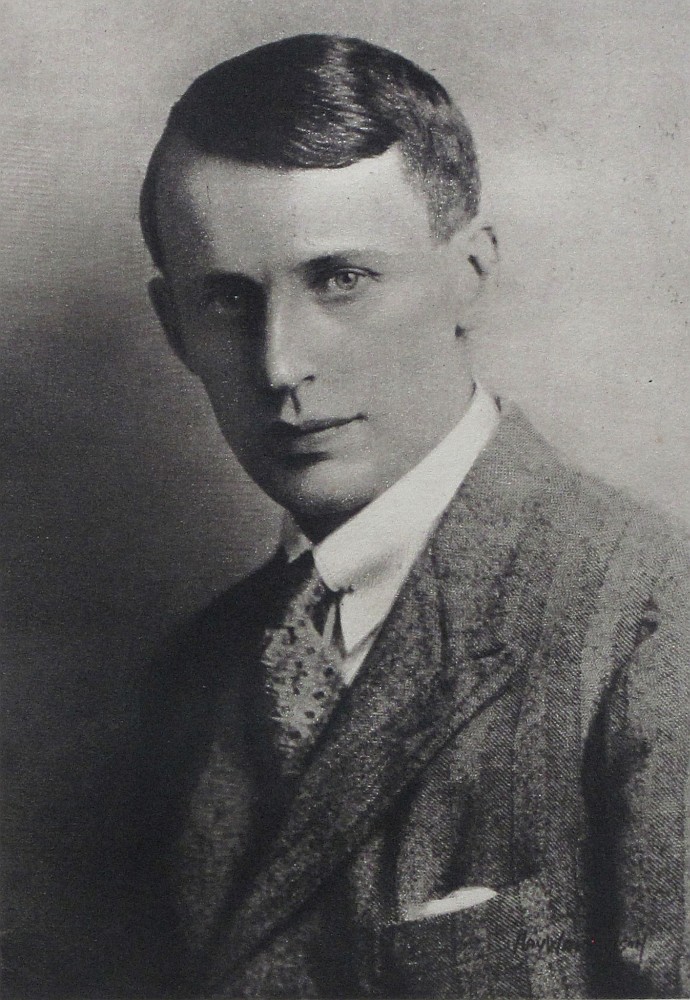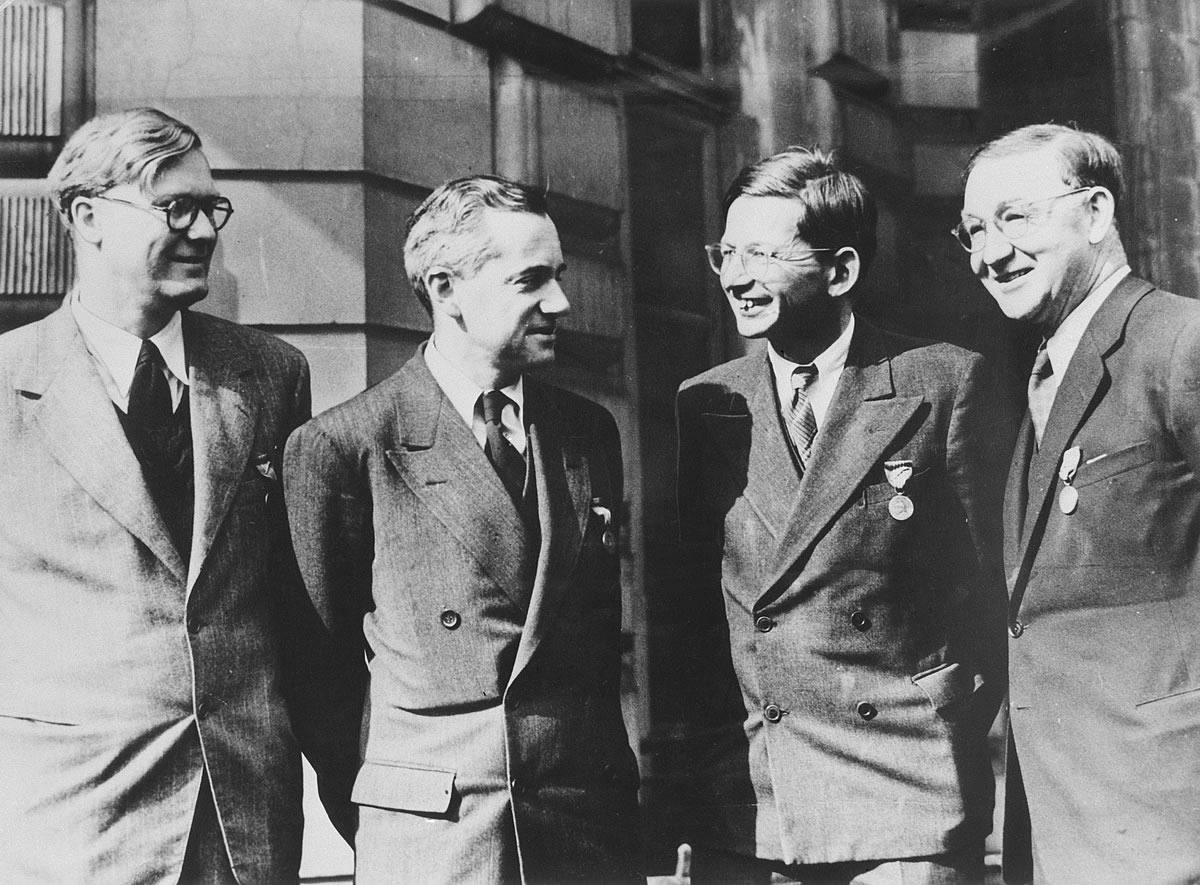The Frisch-Peierls Memorandum
The Frisch-Peierls Memorandum, written in Britain in March 1940 by two leading physicists, Otto Frisch and Rudolf Peierls, was an important assessment confirming the feasibility of an atomic bomb and its impact. It also recognized that “as a weapon, the super-bomb would be practically irresistible,” and argued for developing a bomb as a “counter-threat,” even if it was not intended for attack.
The Frisch-Peierls Memorandum must rank as one of the most historic documents of the twentieth century. It was written at a time when the war was still confined to Europe. The Soviets, the Japanese, and the Americans were all interested bystanders, and the English Channel seemed to become narrower each week to the British and the Germans. Not only is the Frisch-Peierls Memorandum remarkable as the first technical exposition of an atomic weapon, the two authors also considered the military and ethical consequences of such a super-bomb in a simple but profound way. Among the points they made were the following:
1. As a weapon, the super-bomb would be practically irresistible. There is no material or structure that could be expected to resist the force of the explosion.
2. Owing to the spreading of radioactive substances with the wind, the bomb could probably not be used without killing large numbers of civilians, and this may make it unsuitable as a weapon for use by this country.
3. We have no information that the same idea has also occurred to other scientists but since all the theoretical data bearing on this problem are published, it is quite conceivable that Germany is, in fact, developing this weapon.
Frisch and Peierls handed their document to Mark Oliphant, who scrutinized it before sending it to London to be inspected by the just-formed MAUD Committee.
The MAUD Committee

The MAUD Committee (not yet named) first met on April 10, 1940 to consider Britain’s actions regarding the recent discovery of nuclear fission and the possibility of building an atomic weapon. Shortly thereafter, a research program on isotope separation of uranium and fast fission was agreed upon. Lead by G.P. Thomson, the Committee included a number of renowned British physicists such as Mark Oliphant, Patrick Blackett, James Chadwick, P. B. Moon, and John Douglas Cockcroft.
The code name for Britain’s secret committee tasked with developing an atomic bomb, given by G.P Thomson in late June 1941, has a fascinating history. While many believe “MAUD” is a simple acronym that stands for the “Military Application of Uranium Detonation,” its origins appear more complex. The word “maud” actually arrived as a mysterious word in a cable from Lise Meitner to an English Friend: “Met Niels and Margrethe recently both well but unhappy about events please inform Cockcroft and Maud Ray Kent.”
When John Douglas Cockcroft received the cable, he wrote James Chadwick and informed him that he believed “Maud Ray Kent” was an “anagram for ‘radium taken,’” and that the phrase agreed “with other information that the Germans are getting hold of all the radium they can.” Thomson decided to borrow the first word of Cockcroft’s mysterious anagram for a suitably misleading name for the secret committee. It wasn’t until 1943, however, that committee members finally learned that “Maud Ray” was the governess who had taught Bohr’s son English; she lived in Kent.
The MAUD Report Findings
Building upon theoretical work on atomic bomb performed by refugee physicists Rudolf Peierls and Otto Frisch in 1940 and 1941, the MAUD report estimated that a critical mass of ten kilograms would be large enough to produce an enormous explosion. A bomb that size could be loaded on existing aircraft and be ready in approximately two years. The report maintained that a sufficiently purified critical mass of uranium-235 could fission even with fast neutrons.

American scientists had been in contact with the MAUD Committee since the fall of 1940, but it was the July 1941 MAUD report that helped crystallize the American bomb effort. Here were specific plans for producing a bomb, produced by a distinguished group of scientists with high credibility in the United States.
The MAUD report dismissed plutonium production, thermal diffusion, the electromagnetic method, and the centrifuge and recommended gaseous diffusion of uranium-235 on a massive scale. The British believed that uranium research could lead to the production of a bomb in time to affect the outcome of the war.
While the MAUD report provided encouragement to Americans advocating a more extensive uranium research program, it also served as a sobering reminder that fission had been discovered in Nazi Germany almost three years earlier and that since the spring of 1940 a large part of the Kaiser Wilhelm Institute in Berlin had been set aside for uranium research.
Influence
Vannevar Bush and James B. Conant immediately went to work. After strengthening The Uranium Committee, particularly with the addition of Enrico Fermi as head of theoretical studies and Harold Urey as head of isotope separation and heavy water research (heavy water was still highly regarded as a moderator), Bush asked yet another reconstituted National Academy of Sciences committee to evaluate the uranium program. This time he gave Arthur H. Compton of the University of Chicago specific instructions to address the technical questions of critical mass and destructive capability, partially to verify the MAUD results.
How to Win the War
In 1941, no one had more to lose than Britain. Although the United States was supporting England’s efforts “behind the scenes,” England was facing Hitler and the Nazi threat alone. Therefore, it is not surprising that the “sense of urgency” lacking in the United States would have to come across the Atlantic from England.
It appeared by 1941 that the British, at least, knew where they were going. Although Henry Tizard was skeptical himself, others felt that the development of a nuclear weapon could “win the war.”
Consequently, it was Mark Oliphant who finally goaded the American program over the top. Oliphant flew to the United States in late August in an unheated bomber to ostensibly consult about the radar program but was actually charged with inquiring why the United States was ignoring the MAUD Committee’s findings. Oliphant stated the following: “The minutes and reports had been sent to Lyman Briggs (Director of the Uranium Committee) and we were puzzled to receive virtually no comment. I called on Briggs in Washington, only to find out that this inarticulate and unimpressive man had put the reports in his safe and had not shown them to members of his committee. I was amazed and distressed.”
The Uranium Committee
Oliphant then met with the Uranium Committee. Samuel K. Allison was a new committee member, a talented experimentalist and a protégé of Arthur Compton at the University of Chicago. Oliphant “came to a meeting,” Allison recalls, “and said ‘bomb’ in no uncertain terms. He told us we must concentrate every effort on the bomb and said we had no right to work on power plants or anything but the bomb. The bomb would cost 25 million dollars, he said, and Britain didn’t have the money or the manpower, so it was up to us.” Allison was surprised that Briggs had kept the committee in the dark.
To further champion his cause, Oliphant contacted Ernest O. Lawrence at the University of California at Berkeley. After visiting with Lawrence and receiving his support, Oliphant visited with both James B. Conant and Vannevar Bush and then went to see Enrico Fermi before returning to Birmingham, England.
Oliphant’s heroic efforts are generally felt to be the “catalyst” that finally pushed the American bomb effort over the top.
[The text for this page was adapted and taken from the U.S. Department of Energy’s official Manhattan Project history: F. G. Gosling, The Manhattan Project: Making the Atomic Bomb (DOE/MA-0001; Washington: History Division, Department of Energy, January 1999), 9.]






